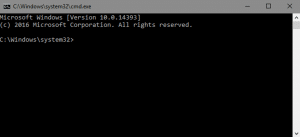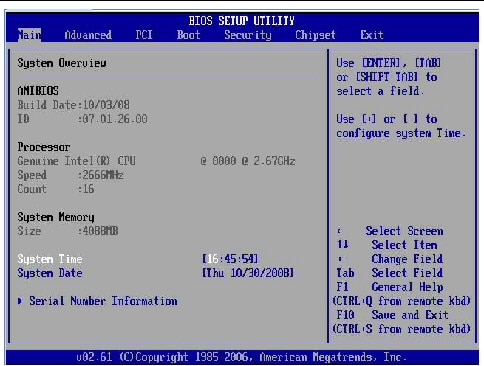Accessing the BIOS is not tricky, but it sometimes might annoy some users. There are so many keys to choose from and key-spamming. Fortunately, an easy way to reboot to it is through your Windows OS environment. All you need to do is run a simple command on the Command Prompt (CMD) of Windows.
In this Quick Tips article, we will learn to master the UEFI/BIOS (CMD BIOS) easily, like pros.

How to
- Choose “Command Prompt” and run it “As Administrator.”
- Type this command:
shutdown /r /fw
- On the dialogue box that appears, choose “OK“.
That’s it! After restarting, you will come across your UEFI/BIOS. It couldn’t get simpler, could it?



It is a clickbait title. It gives the impression there’s some new super fast directly into uefi without a restart.
It doesnt intend to be a clickbait. I think is an appropriate title to describe what it is. We dont need clickbaits as a site and no harsh comments will achieve anything. I dont know why someone guess that u can access uefi without a reboot either. If u have an actual better title, feel free to suggest it. But saying that is clickbait is just a bad and inappropriate comment.
Definitely clickbait.
Should be titled, “Rebooting into UEFI/BIOS using CMD”
That’s the proper non clickbait title. Do with it what you will.
Strange how the title says reboot into bios and you think it does not require a restart.
NOT simply reboot — reboot into UEFI. You can the same thing in Linux:
systemctl reboot –firmware-setup
As the author stated, this keeps you from having to guess/spam the key to enter UEFI in case your PC is too fast/monitor is too slow to see what it is. It just works (on anything using systemd).
This. 🙂
You’ve got to be joking me. You gave a CMD prompt to restart?!
???
The headline is misleading, and implies you’re somehow loading the bios while still in the operating system. You’re not accessing uefi, you’re rebooting into uefi.
That’s why the commenter is upset. It’s a pretty clickbait title where the payoff is lame compared to the implied capability.
The article itself is fine, though, it is lacking in description/explanation. But idk who your target audience is. Technical folk will read the docs, beginners need to know the explanation, this doesn’t really teach either audience. Maybe a technical user that just wasn’t aware it was an option?
Either way, change access to reboot to, and you will see less internet rage, probably.
I didnt take it as rage. Maybe what u suggest might suit better as a title, but it wasnt intended for clickbait reasons. I thought it was a fit title. Quick tips article are articles that targets to give either solutions to issues or tips that might need or might be handy, mostly. I see them as a way give info, tips or guidance to someone. I try to make them “quick” in order to be that. But I have to reconsider the explanation section, as u suggest. Anyway, thanx for your on spot comment. Much appreciated.
Content was fine. Title is the problem “Reboot or restart into…” Is the proper terminology. Accessing implies it can be configured from CMD line which isn’t possible.
Thanx for the title suggestion, then. Corrected. I hope noone come now and say that “reboot into” is a clickbait. And as I already stated it wasn’t meant to be a clickbait. Don’t insist on it, because it is not true. Ok, mr Baited who talk about clickbaits? 🙂 Anyway, thanx for your feedback. Anyway, the original title was accessing not configuring the BIOS. So, I can’t really tell why should someone understand that you configure it by accessing it.
Not just restart, restart into UEFI. Actually you Not simply reboot – reboot into UEFI. You can do NOT simply reboot — reboot into UEFI. You can the same thing in Linux:
systemctl reboot –firmware-setup
As the author stated, this keeps you from having to guess/spam the key to enter UEFI in case your PC is too fast/monitor is too slow to see what it is. It just works (on anything using systemd).
Really… wmic would help someone